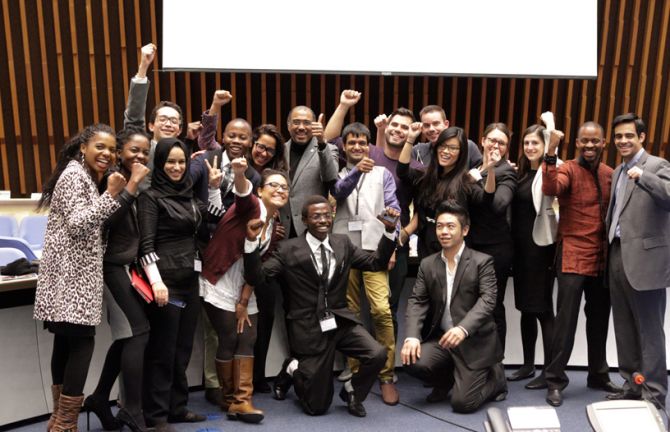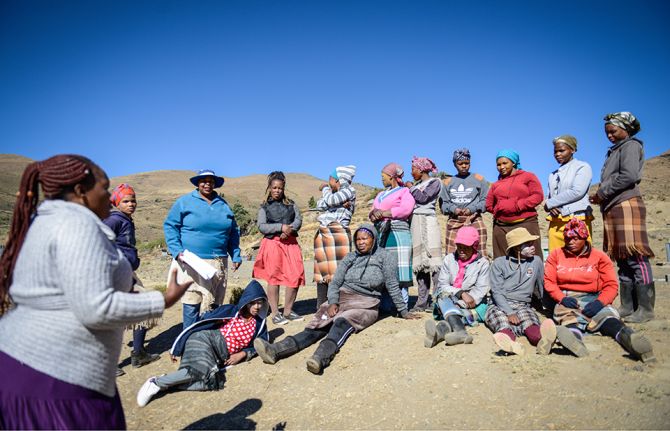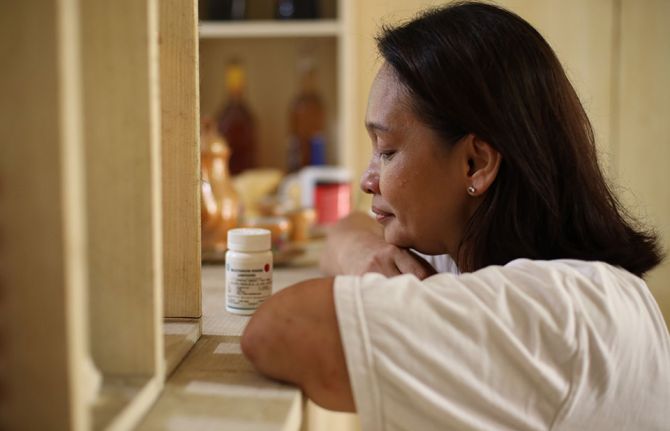

Young people explored ideas, experiences and solutions with the UNAIDS Board about the shape and scope of meaningful HIV programmes encompassing youths and adolescents at a time in their lives of great psychological, physical and social change.
Feature Story
Walk in my shoes — UNAIDS Board devotes key session to HIV, adolescents and youth
20 December 2013
20 December 2013 20 December 2013A major concern in the global response to HIV is how to ensure that young people take their rightful place as active participants with access to high quality HIV services and the right skills and knowledge to adopt strategies to stay safe, delivered in a supportive environment. Recognizing the critical need to urgently scale up effective HIV responses to adolescents and youth, the UNAIDS Programme Coordinating Board, meeting in Geneva this week, devoted a full-day thematic segment to HIV, adolescents and youth.
The situation is extremely serious. Although there has been a 32% reduction in the estimated number of new HIV infections among people aged 15-24, this key group is facing an emerging crisis. While the number of AIDS-related deaths overall fell by an estimated 30% between 2005 and 2012, estimates suggest that the number of deaths among young people increased by 50%. In addition, 15-24 year olds still accounted for 39% of all new adult infections in 2012.
“This is the time to re-imagine the HIV response among adolescents and youth. Young people are ‘the now and the future’, born in an era of HIV and antiretroviral treatment,” said Michel Sidibé, Executive Director of UNAIDS. “Without addressing their needs, there will be no AIDS-free generation and the gains made towards eliminating new HIV infections among children will be lost—their HIV risk merely deferred to the second decade of life.”
Lively and frank discussions
Under the theme of Walk in my shoes, the 19 December gathering brought together a host of young people from around the world who themselves led the main sessions on HIV prevention, testing and treatment. Young people explored ideas, experiences and solutions with the Board about the shape and scope of meaningful HIV programmes encompassing youths and adolescents at a time in their lives of great psychological, physical and social change. The discussions were lively, frank and open.
There was much emphasis on how to foster greater inclusion and ensure that young people are not simply passive recipients of programmes but play an integral role in their design, implementation and evaluation. It was found that currently their use of HIV prevention, treatment and care services is often lower than their older counterparts and that there remained a critical need for a scale-up of youth-friendly services and programmes which are fully resourced and tailored to their specific needs. Opportunities to link HIV with other sexual and reproductive health services as well as education, gender equality and social protection were also explored.
In a session on what successful HIV prevention looks like for young people, their unique prevention needs were highlighted, including those for key populations such as men who have sex with men, injecting drug users and sex workers. Young leaders shared good practices at country level. Renata Bayazitova from the Public Foundation "Ganesha" in Kyrgyzstan said that the critical elements of success for harm reduction services for young women who inject drugs, is to greater access to safe spaces, free of judgment, where young people can come at any time without the fear of being misunderstood, where they can get information and support on a range of issues.
Across all programmes a common element of success was the involvement of young people in the design of the services. The participants highlighted that only by working with young people will services be developed which are right for them, delivered in the right way, by the right providers and in the right places. Jerson See from the community organization Cebu Plus in the Philippines said, “You need to work with us, be case we know the market…we are the market.”
Creating an enabling social and legal environment in which young people feel motivated to go for HIV testing was also examined through a session which asked the question—‘Do all tests have to be hard? It was noted that current levels of HIV testing among adolescents and youth are still very low and that with treatment available it was now imperative to ensure young people living with HIV are diagnosed and linked to care and treatment.
One of the critical barriers raised repeatedly by participations was laws pertaining to the age of consent in accessing HIV testing services. “In Mexico, you are allowed to take an HIV testing when you are under 18, but according to the law a parent or guardian has to come with you to receive the test result,” said Corina Martinez Fundación Mexicana para la Planeación Familiar, A.C. “Fortunately in Mexico that rule is already under review, but it is important to take this example and monitor to ensure that in all our countries, these measures should be strengthened to ensure universal access to HIV testing.”
Participants also heard Zambia’s innovative mobile technology project, U-report, which has been able to scale up demand for HIV testing among young people, as well as Dr Nono Simelela, Special Adviser to The Deputy President, Chair of the South African National AIDS Commission, outlining the process in South Africa which led to the lowering of the age of consent in access to HIV testing to 12.
There was also an animated dialogue on challenges and solutions in relation to access to treatment and how this access can be integrated into youth-friendly services which also offer sexual and reproductive health interventions and support with adherence to drug regimens and disclosure.
After a full day of discussion and debate, youth delegates and Board members were galvanized into redoubling their efforts to ensure that young people have the tools and the space to put themselves front and centre of the AIDS response and play an active role in achieving in getting to the end of the AIDS epidemic.
“As a youth movement, we’ve never been more organized than now,” said Pablo Aguilera, Director of the HIV Young Leaders Fund. “We’re ready to work to ensure HIV remains a priory in the post-2015 development framework”.



